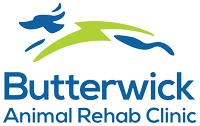As we age, our joints suffer from wear and tear – it’s an inevitable part of the aging process and, while we can slow it down, it will eventually affect us all.
And dogs are no different; in fact, as they age around five to six times as fast as humans, that wear will appear to come on sooner.
One of the results of this wear and tear is a condition called osteoarthritis, or OA. This is one of the most common chronic conditions affecting dogs, and is caused by the deterioration of cartilage within the joint. The cartilage acts as a slippery cushion to allow the joint to move smoothly through its full range of motion.
As you can imagine, when this starts to break down, due to things like age, injury, repetitive stress or disease, it results in pain, inflammation and a decreased range of movement for your pet.
While OA is most generally caused by age and is, unfortunately, incurable, there are ways of making your pet more comfortable as they get older and movement becomes more tricky.
Regular exercise
While your routine may need to be adjusted to take worsening mobility into account, regular, gentle exercise is vital to keep on top of joint problems.
Regular physical activity has both physical and emotional benefits, including boosted mood, weight control, improved blood flow, reduced pain and improved strength and suppleness of joints, ligaments, and muscles.
However, it’s important to bear things such as the temperature and terrain in mind. Older dogs feel the cold more than younger ones, and you’ll need to pick routes with levels surfaces and no hidden surprises, such as ditches or holes.
Around the home
Make sure everything your dog needs is within easy reach; they may no longer be able to jump up and may even have trouble climbing stairs.
Consider installing ramps for access to higher surfaces, such as the sofa, bed or car, and make sure slippy surfaces are covered with a rug or similar, to save too much pressure on already weakened joints.
Another simple measure that can reduce undue pressure on joints is putting their food and water on a raised platform, as well as making sure that their sleeping places are the right combination of soft yet supportive.
A balanced diet
You are what you eat, so they say, and your dog needs a healthy diet just as much as we humans do.
Maintaining a healthy weight is vital for all dogs, but especially those suffering from OA, as excess weight puts added pressure on delicate and often painful joints.
You may also want to think about adding supplements to keep their joints healthy; speak to your vet about both this and how to create a balanced diet that meets all your dog’s nutritional needs. We can also guide you with what we see works for many dogs and avoid the things that don’t make a difference.
If your dog has been diagnosed with OA, there are also a number of treatments you can explore, as well as the lifestyle changes mentioned above.
At Butterwick, we offer a range of options, such as dog physio, underwater treadmills and a hydrotherapy pool, along with magnetic and laser therapy.
Water-based therapies are perfect for dogs with joint issues. The warmth is soothing for aching joints and can help relax tight, stressed muscles. Meanwhile, the buoyancy provides support, making it easier for your dog to exercise and create their normal movement patterns – a very important part of the rehabilitation process. The water also provides a hydrostatic pressure, which helps to reduce swelling, allowing more movement in the joint and decrease pain.
We offer free taster sessions (what can we say? We just love meeting new dogs) and our team always take the time to get to know you and your pet to offer the best possible solution.
For more information on any of our services, or for advice on all sorts of injuries, get in touch with our friendly and knowledgeable team – we can’t wait to meet you both!
